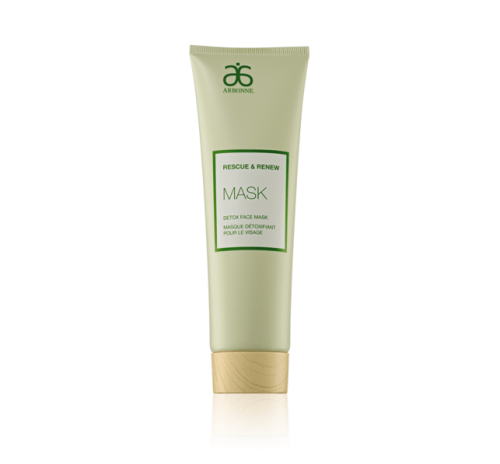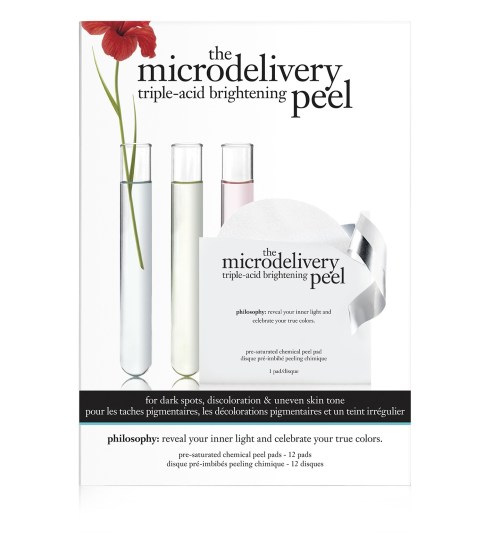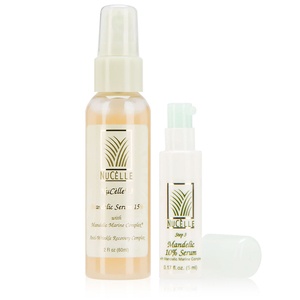This under-the-radar chemical exfoliant is actually super gentle
Dermatologists and facialists explain the mandelic acid benefits for skin and how to use it to brighten your complexion, along with which products to buy.

It was only recently that I began hoarding each and every beauty product that claims to “brighten” my skin (thanks to a long bout with acne that left my complexion marked with scars). I thought I had it all covered: retinol to increase cell turnover, various acids to exfoliate, and plenty of vitamin C serum. But then I heard about another skin-brightening superstar during a facial treatment I had: mandelic acid.
Basically, it’s an under-the-radar alpha hydroxy acid (AHA). “Mandelic acid is an AHA derived from bitter almonds,” says celebrity facialist Shani Darden. What makes it special, however, is that it’s unlike other AHAs (like glycolic and lactic acid, for instance) because it’s easier on the complexion. “It has a larger molecule than some other AHAs which is what makes it gentler and less likely to cause any sort of post-inflammatory hyperpigmentation,” she says.
Founder of San Francisco’s Spa Radiance, facialist guru Angelina Umansky, has been using mandelic acid for almost 20 years. “Mandelic acid is very brightening and also gives the skin strength,” she tells me. “I use it on all skin types except those with rosacea during my facials, and I always put a few drops in whenever I cleanse my clients’ skin or before dermabrasion. It’s one of my favorite products in treatments for anti-aging or hyperpigmentation.”
Mandelic acid works its wonders by exfoliation (of course). “Similar to other AHAs, mandelic acid functions as an exfoliator that dissolves skin cells to treat irregular skin pigmentation, acne, and fine lines or wrinkles,” says Naissan O. Wesley, MD, FACMS, a dermatologist and Arbonne scientific advisory board member. She also notes that, due to it being a large molecule, it’s a gentler chemical exfoliant than something like glycolic acid.
You can find the MVP ingredient in all sorts of beauty products, from serums to lotions to wipes, but use it sparingly, as you would with other exfoliating acids. “I’d recommend exfoliating with it one to two times a week depending on your skin type and the other products you’re using,” says Darden, though Dr. Wesley says that some people can even slather it on nightly.
What’s more? Using it with certain other exfoliants can increase mandelic’s ability to give you a glow. “It’s been studied with other exfoliators such as salicylic acid and other AHAs, and some products contain these to increase efficacy,” says Dr. Wesley. “But the more exfoliators used—especially at higher concentrations—the more caution you should take for potential irritation.” Convinced? Boost your radiance with these mandelic acid skin-care products below.
Brighten that glow

Dr. Dennis Gross Alpha-Beta Peel Extra-Strength Formula $88

Arbonne Rescue & Renew Detox Mask $44

Philosophy The Microdelivery Triple-Acid Brightening Peel $70

Allies of Skin Mandelic Pigmentation Corrector Night Serum $92

NuCelle Mandelic Serum 15 Percent $36

NeoStrata Oil Control Gel $42
You could also try exfoliating face powders to renew your skin. But its also important to know when you’re over-exfoliating—which has bad consequences on your glow.
Sign up for the Well+Good SHOP Newsletter
Get exclusive deals on wellness, beauty, fitness, and food products that have been hand-picked by our editors.
Got it, you've been added to our email list.










